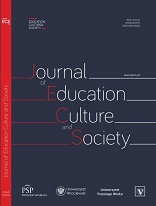The interdisciplinarity and innovativeness of methods in rehabilitation of children with cerebral palsy
The interdisciplinarity and innovativeness of methods in rehabilitation of children with cerebral palsy
Author(s): Karolina Nowak, Magdalena Kazimierska-Zając, Luba JakubowskaSubject(s): Education, Sociology
Published by: Fundacja Pro Scientia Publica
Keywords: rehabilitation methods; cerebral palsy; disability care
Summary/Abstract: Thesis. Cerebral palsy (CP) is a group of disorders resulting from damage to the central nervous system in the early stages of its development. The aim of the rehabilitation of persons with CP is to make their dependence on the assistance of others as little as possible and to improve their quality of life, as well as the quality of life of their families. New methods are developed in which new technologies are employed and a holistic approach to the patient, requiring the cooperation of specialists in various fields, is assumed. The most commonly used methods of working with children with cerebral palsy include the NDT-Bobath method and the Vojta method. Apart from them unconventional methods are also employed, including hippotherapy, virtual reality, the sensory integration method, the conductive education method, and the space suit method. Aim of the paper. The aim of the paper is to present the methods employed in increasing the agility of children with cerebral palsy. Focus has been placed on traditional and commonly used methods, as well as the unconventional methods which are currently undergoing evaluation. Results. Thanks to diversifying rehabilitation with new methods and enriching it with the experience of specialists in areas outside medicine patients with cerebral palsy are able to fully benefit from their own potential. Quality of life is improved, independence is increased, and new opportunities are discovered. Some of the newest methods may serve to supplement traditional therapies, others can substitute for them in the future. What is crucial is to focus not only on heightening the physical agility of the patients, but also to make the course of the therapy more attractive, and to work on improving the patients’ functioning in other areas of life, as well, such as social contacts or hobbies.
Journal: The Journal of Education, Culture, and Society
- Issue Year: 10/2019
- Issue No: 1
- Page Range: 125-135
- Page Count: 11
- Language: English

